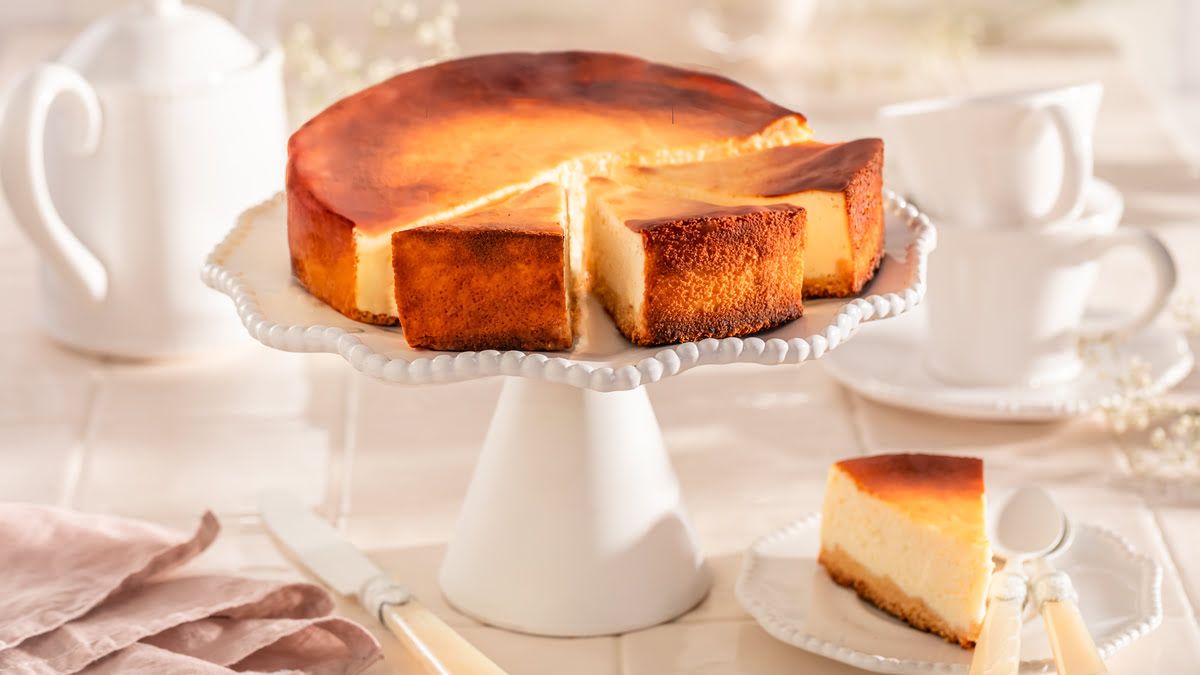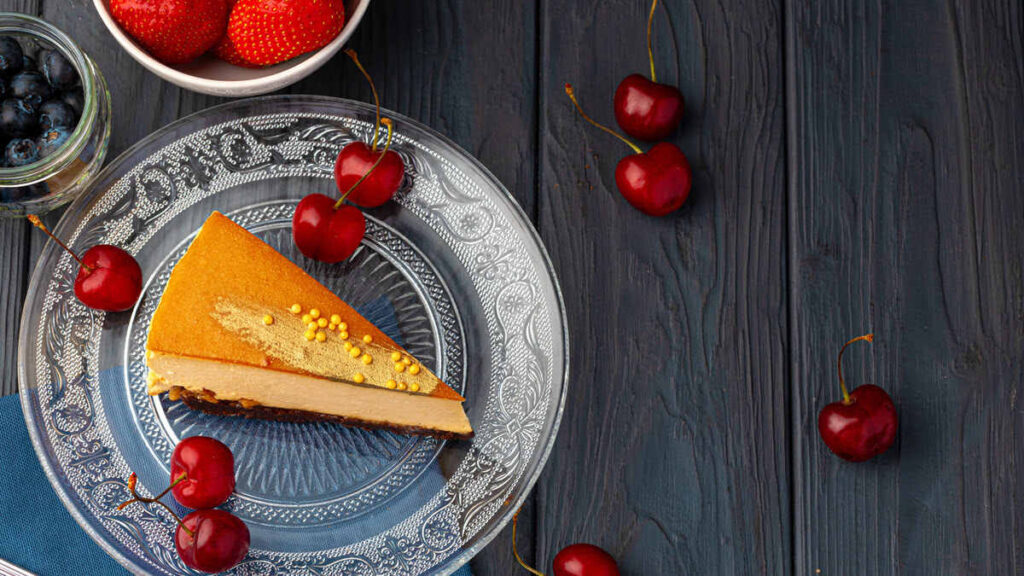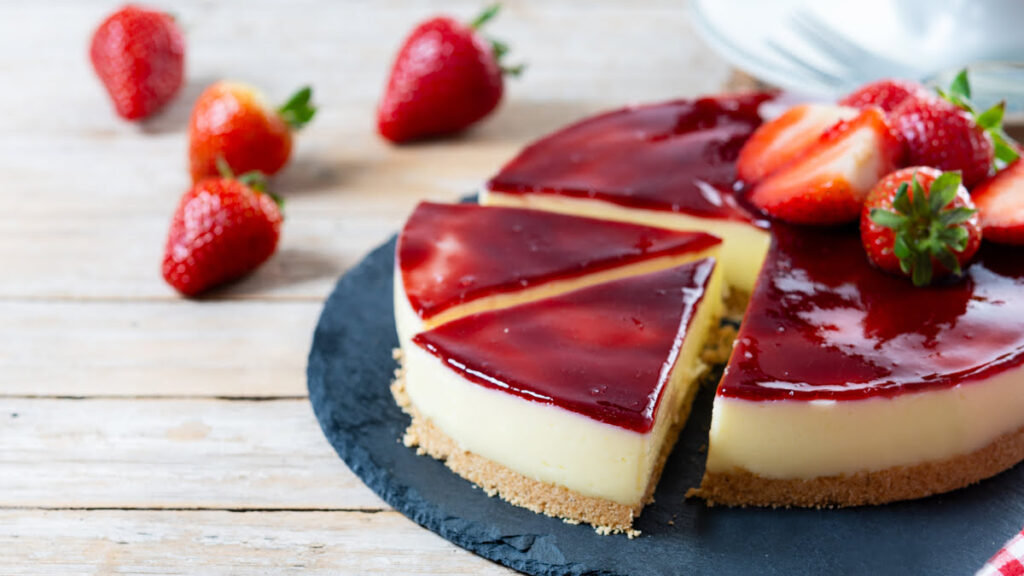
Where Does Cheesecake Come From? | Facts About Cheesecake

Cheesecake has long held a special place among the most beloved desserts. Delicate, velvety, and incredibly versatile, it graces both festive tables and the everyday menus of dessert lovers. Although it’s now hard to imagine a bakery without it, the history of this treat goes back much further than many might expect. From ancient feasts to modern interpretations, cheesecake has undergone a long journey and has become an integral part of the culinary heritage of many cultures.
In this article, we’ll take a closer look at where cheesecake comes from, explore its most popular varieties, and discover what makes it a dessert that never goes out of style.
Cheesecake as One of the Oldest Desserts in the World
Today, cheesecake is often associated with homemade bakes and elegant patisserie-style desserts. Surprisingly to many, however, its roots trace all the way back to ancient times.
Cheesecake Originated in Greece
Considered one of the oldest known desserts, cheesecake likely originated in ancient Greece, where it was more than a culinary treat – it was valued as an energy source. Historical evidence suggests it was served to athletes during the first Olympic Games, highlighting its elevated status even back then.
The Greeks made cheesecake using simple, natural ingredients like soft cheese, honey, and dough, creating a sweet and nourishing dish called Plakountas. This dessert symbolized luxury and was typically served at celebrations and important gatherings.
One of the earliest recorded recipes for cheesecake dates back to the 3rd century AD and is attributed to Athenaeus of Naucratis – a Greek scholar and gourmand who referenced the dessert in his writings.
Cheesecake in Ancient Rome
Over time, the cheesecake recipe found its way into Roman cuisine, where it was transformed and given new purposes. Inspired by Greek culinary traditions, the Romans developed dishes like libum – a cheese-based cake baked in clay pots and used in religious rituals. Another popular variation was placenta – a layered dessert made from cheese, honey, and dough, which gained widespread popularity throughout the Roman Empire.
The Culinary Evolution of Cheesecake
Over the centuries, the original cheesecake recipe underwent countless transformations.
In medieval Europe, the dessert was often prepared in monasteries, where cooks experimented with ingredients such as eggs, cream, and flour. It was during this time that early versions resembling today’s classic baked cheesecakes began to appear. Soon after, the no-bake cheesecake emerged, gaining popularity thanks to its lightness and creamy texture.
Modern varieties of cheesecake are the result of centuries of culinary evolution – from a simple mixture of cheese and honey to a wide array of baked and chilled creations in endless flavor combinations. While it’s difficult to pinpoint a single origin for the cheesecake we know today, there’s no doubt that its roots are deeply tied to ancient cultures.
How Did Cheesecake Arrive in Poland?
Although cheesecake has its roots in ancient Greece, its appearance on Polish tables is the result of culinary influences from various parts of Europe.
The most widely accepted story attributes its introduction to King John III Sobieski, who is said to have brought the Viennese cheesecake to Poland after his victorious campaign at the Battle of Vienna. Known for his love of good food, the king helped popularize this creamy dessert among the Polish nobility.
However, it’s worth noting that Poles had long enjoyed baked goods made with curd cheese. Even in Old Polish cuisine, desserts – such as arkas, an aromatic treat prepared from milk, eggs, sugar, and spices – were known. One version of this dish included aforementioned curd cheese, suggesting that the cultural landscape in Poland had been ready for cheesecake for centuries.

The 19th century marked a turning point in the dessert’s popularity. Cheesecake began to appear regularly in cookbooks, often under the name cheese pie. It was baked both with and without a crust – in the Viennese style. Regional variations soon emerged, such as the famous Kraków (city in Poland) cheesecake with a lattice crust and candied orange peel, or the lesser-known Kashubian cheesecake, which included cooked potatoes in the cheese filling.
In the 1980s, under the influence of pop culture, the Izaura cheesecake (sernik Izaura) gained popularity. Inspired by a Brazilian TV soap opera, this two-tone version combined a classic cheese layer with a cocoa base, winning over many Polish hearts and remaining a charming alternative to traditional versions to this day.
What Is Cheesecake Made Of?
At the heart of every cheesecake, regardless of style, is the cheese filling – but the preparation method and additional ingredients can vary greatly depending on region, tradition, or personal preference.
- In classic Polish cuisine, traditional cheesecake is made with rich, full-fat curd cheese that’s finely ground to create a smooth, velvety texture. Today, this time-consuming step is often replaced by store-bought cheesecake mixes that simplify the process without compromising on flavor.
- No-bake cheesecakes are also gaining popularity for their light and refreshing taste. These versions typically use cream cheese, natural yogurt, or pre-made cheesecake bases. Stabilized with gelatin, they are ideal for summer desserts and often include seasonal fruit and a layer of jelly, making them both delicious and visually appealing.
- Modern cuisine increasingly embraces alternative cheesecakes suited to various dietary needs. Vegan versions may be made from tofu, cashews, coconut milk, or plant-based creams. Despite the absence of dairy, these variations can surprise even the most devoted traditionalists with their taste and texture.
What makes cheesecake so special is its remarkable adaptability. By changing ingredients and toppings, you can create dozens of unique versions – with poppy seeds, dried fruit, chocolate, lemon zest, crumble topping, or meringue. The many types of cheesecake ensure there’s something for everyone, whether you prefer classic baked versions or modern interpretations.
International Cheesecake Day
Although cheesecake is loved by many around the world, few people know that this iconic dessert has its own special holiday.
Celebrated on July 30, International Cheesecake Day is the perfect occasion to honor the dessert’s diversity and rich history. On this day, sweet lovers across the globe indulge in their favorite variations: ranging from classic baked cheesecakes to refreshing no-bake versions often topped with fruit and jelly.

The idea of dedicating a special day to cheesecake was born out of its enormous popularity, especially in European and American cuisine. Interestingly, nearly every country has its own unique take on this dessert – from New York-style cheesecake made with cream cheese, to fluffy Japanese cheesecakes, to the traditional Polish version based on curd cheese (twaróg). The holiday celebrates not only its delicious taste but also the creativity of bakers and the diversity of culinary traditions.
In Poland, Cheesecake Day is becoming increasingly popular. Bakeries and patisseries offer limited-edition flavors, and social media is filled with photos of homemade cheesecakes. For many, it’s also a chance to discover lesser-known versions – vegan, gluten-free, locally inspired, or international fusions.
While celebrating this special day, it’s worth not only savoring the flavor but also reflecting on the cheesecake’s origins and evolution throughout the centuries. From ancient recipes to contemporary reinventions, cheesecake continues to delight and inspire, bringing generations and cultures together in every slice.
How Many Calories Does Cheesecake Have?
This is a common question among dessert lovers – especially those who are mindful of their diet. However, there’s no one-size-fits-all answer. The calorie content of cheesecake can vary significantly depending on the type, ingredients used, and preparation method. Some versions are relatively light, while others are true calorie bombs.
Calories in Classic Cheesecake
A traditional cheesecake made with full-fat curd cheese, butter, eggs, and sugar – often with a crust or topping – can contain anywhere from 350 to 600 kcal per slice (about 100-150 g). Add-ins like raisins, poppy seed filling, chocolate, or caramel can significantly increase the calorie count.
Calories in No-Bake Cheesecake
No-bake versions made with lighter ingredients like natural yogurt, skyr, or low-fat quark tend to be lower in calories. A serving can contain as few as 150-250 kcal, especially if it’s free of added sugar or heavy toppings. These variations are popular among people looking for a lighter dessert option.
How to Calculate Cheesecake Calories
To get an accurate estimate of the calorie content in your cheesecake, pay close attention to the ingredients. For homemade bakes, simply total the calories of all ingredients and divide by the number of portions. In the case of store-bought or bakery cheesecakes, it’s best to ask for nutritional information or check if the producer provides it.
Facts About Cheesecake | Summary
Though now seen as a classic Polish dessert, cheesecake has a surprisingly long and multifaceted history. From ancient Greek banquets and Roman rituals to royal feasts in Poland, this dessert has traveled far – constantly evolving while never losing popularity.

Today, cheesecake appears in countless forms – from rich, baked versions to light and creamy no-bake styles inspired by contemporary culinary trends. While the classic cheesecake still evokes feelings of home and holiday tradition, more and more people are embracing alternatives like gluten-free, vegan, or low-calorie versions.
No matter the variation, cheesecake bridges generations and cultures, making it a truly timeless and universal dessert. Its rich past and cultural diversity only reinforce how extraordinary this seemingly simple treat really is.



